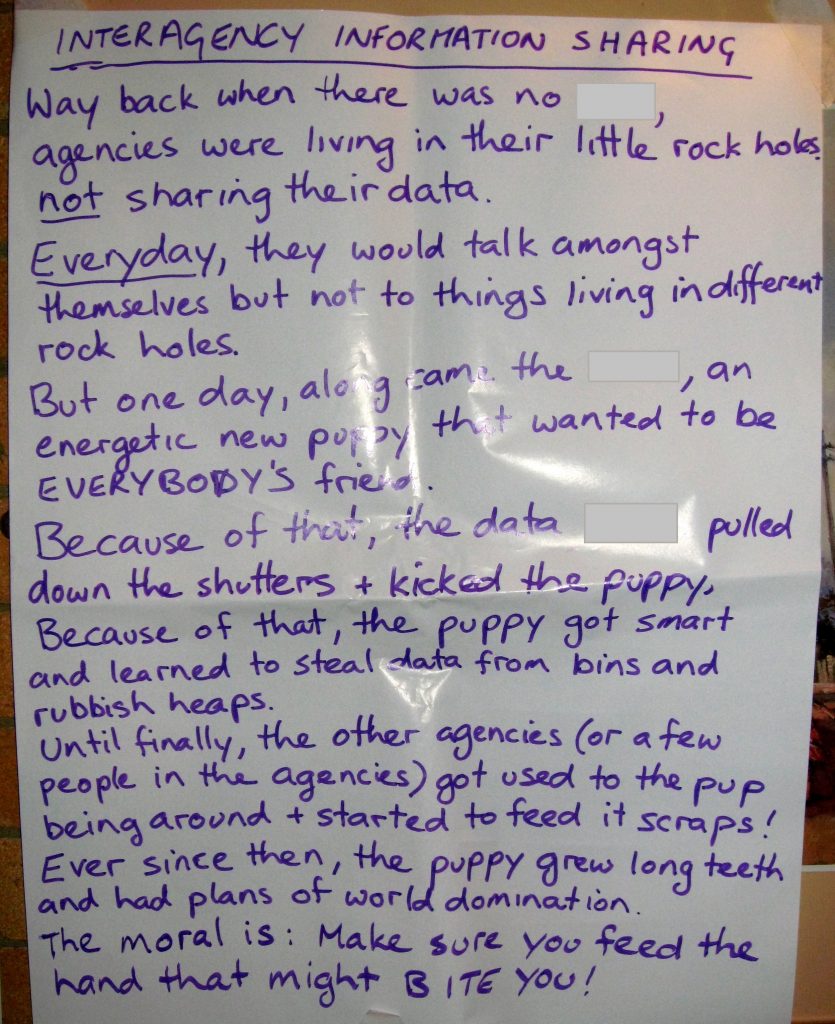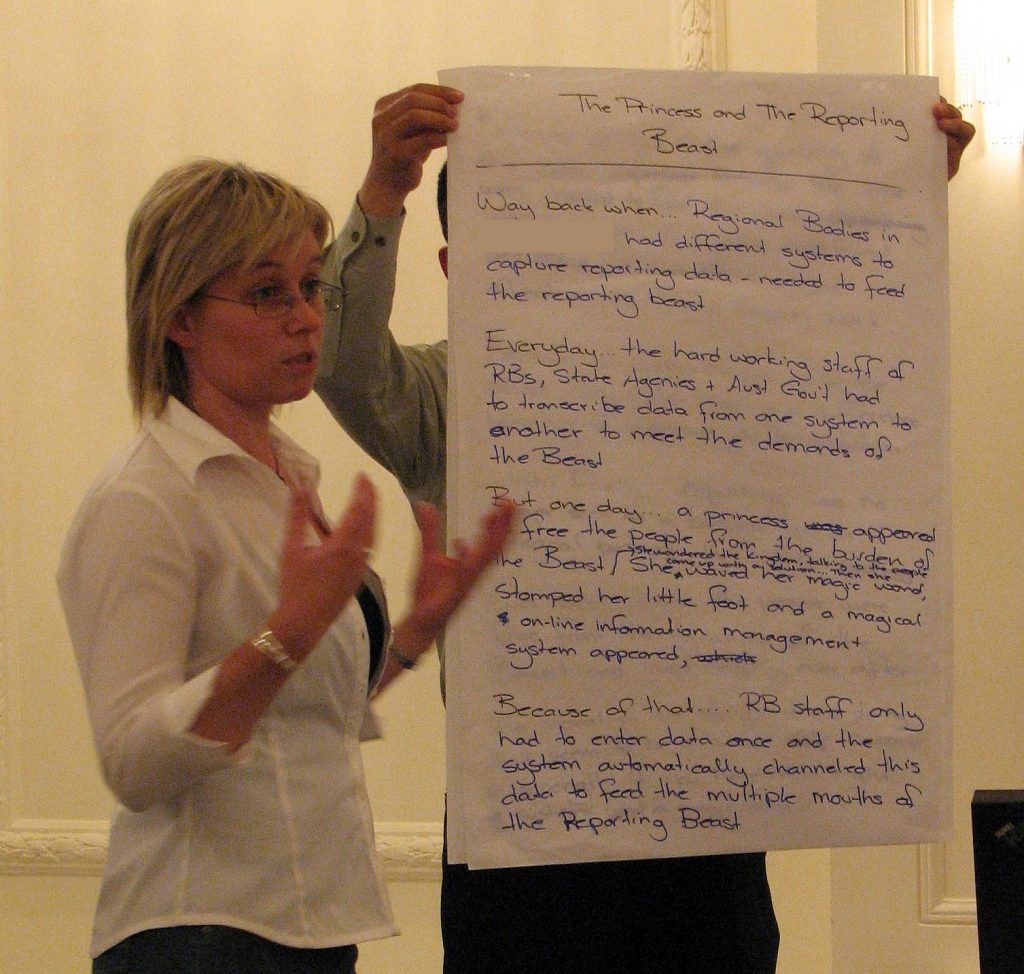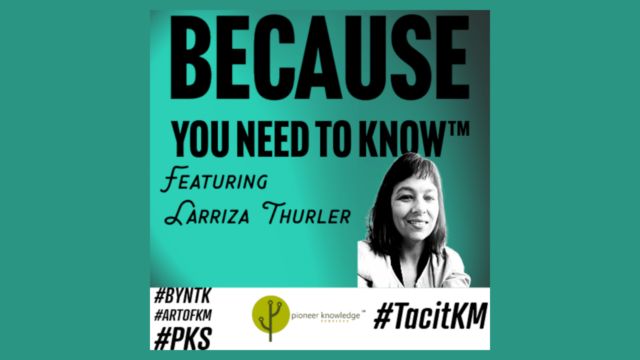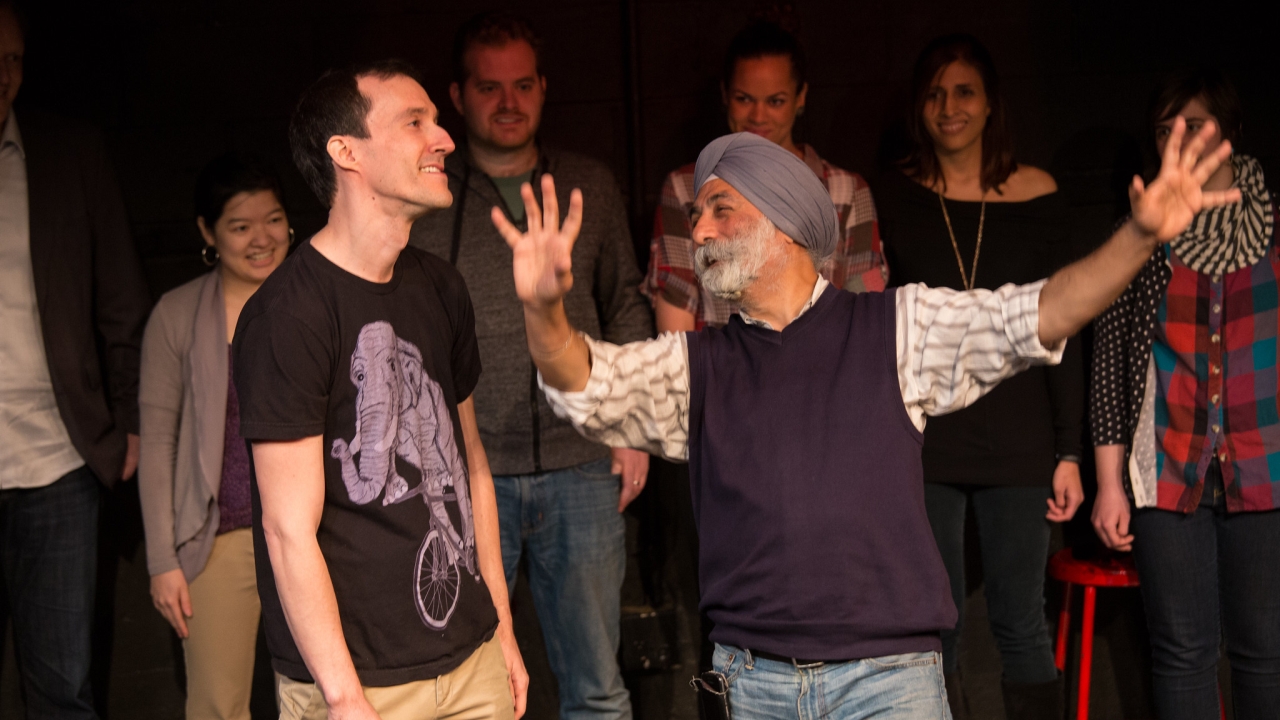Using the “story spine” as a means to access unconscious knowledge and understanding [Arts & culture in KM part 5]
This article is part 5 of a series exploring arts and culture in knowledge management. It was first published in RealKM Magazine on 7 November 2019, and has been republished to form part of this series because it is a valuable illustration of how the art of creative writing can be used in knowledge management.
In an inspiring i2insights blog article, Lelia Green talks about her experience in using creative writing as a means of accessing unconscious knowledge and understanding. Lelia Green PhD is Professor of Communications in the School of Arts and Humanities at Edith Cowan University in Perth, Western Australia.
She writes that:
The electric experience of things falling into place is a well-recorded outcome of ‘writing to find out what you want to say.’
The article reminded me of an activity that I’d previously been involved in using for this very purpose as part of the sensemaking step of our knowledge strategy process for Australia’s 56 natural resource management regions.
This activity is the “story spine.” While not facilitating the longer focused periods of concentration that Lelia Green encourages, the story spine provides the other favourable conditions for revealing insights that she lists, being:
- allowing an internal, less-conscious process to take over, as part of an
- intense engagement with a bigger picture, that
- enables the minutiae of detail to fall subconsciously into place
- revealing itself as it does so.
Indeed, the way in which Lelia Green has written these points is actually very reflective of the story spine structure, as you’ll see.
The story spine
Playwright Kenn Adams is acknowledged as the creator of the story spine, which he introduces in the video above.
The story spine is described as a remarkably useful way to think about stories. It looks like this:
Once upon a time… (or Way back when…)
Every day…
Until one day…
Because of that…
Because of that…
Because of that… (repeat as needed)
Until finally…
And the moral of the story is… (optional)
Although very simple, such is the value placed on the story spine that former Pixar story artist Emma Coats has listed it as one of her 22 rules for telling a great story (number 4).
Using the story spine to access unconscious insights
The book Training to Imagine: Practical Improvisational Theatre Techniques to Enhance Creativity, Teamwork, Leadership and Learning1 describes how a wide range of improvisation activities, including the story spine, can be used in an organisational context, including “to enhance the creativity and communication skills of managers and individual contributors.”
After learning about it from this book, facilitator and trainer Viv McWaters documents her successful use of the story spine with groups for reflecting, celebrating, and planning. She describes it as “one of the best planning tools I’ve used.”
Drawing on earlier advice from his colleague Andrew Rixon, Shawn Callahan from business storytelling consulting company Anecdote describes how he also introduced the story spine to our knowledge strategy process in response to what happened in the sensemaking workshop for one of our pilot regions:
My first opportunity was at a workshop in Tasmania where we were helping natural resource managers develop a knowledge strategy for their region. We had reached the point in the workshop where we had identified a set of issues that were either working well or needed some attention so I asked the groups to grab an issue and tell a story explaining what happened. People busily jumped into the activity but I noticed they were just writing dot points detailing their opinions about what had happened. No one wrote a story.
It seems that they didn’t know what to do to write a story. I had just assumed that everyone else thinks about stories like I do and has a sense what one looks like. Big mistake!
My next opportunity was at another knowledge strategy workshop but this time with a government department in Canberra. I had remembered Andrew introducing us to story spines so I dug out the blog post … Rather than use “Once upon a time” I instructed people to start their stories with “Way back when”. I find the fairy tale beginning too foreign for business people.
Well, the groups took to the tasks with gusto and in a very short time (30 min) we had eight stories that described various aspects of what was happening. Each group recited their story to great applause.
This is an effective way to get people primed for intervention design and we found that the groups were more aware of the subtleties and multiple viewpoints by going through a set of sensemaking tasks, this being just one.
Following on from his successful use of the story spine with government department in Canberra, Shawn included it as a step in the sensemaking stage of our knowledge strategy process, where I was then able to experience its effectiveness.
Figure 1 shows an example of one of the story spine stories from our knowledge strategy workshops, while Figure 2 shows another of the stories being communicated to all workshop participants.


Why not try it?
So far we’ve really only scratched the surface of the potential for the use of the story spine as a means to access unconscious knowledge and understanding in planning, strategy development, learning, communication, and evaluation.
Why not try the story spine for yourself, and tell your story?
Reference:
- Koppett, K. (2013). Training to imagine: practical improvisational theatre techniques for trainers and managers to enhance creativity, teamwork, leadership, and learning. Stylus Publishing, LLC. ↩
Also published on Medium.






